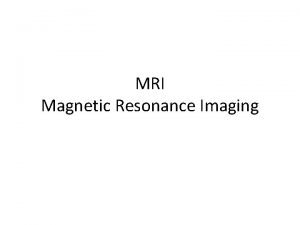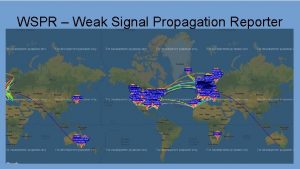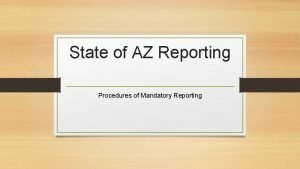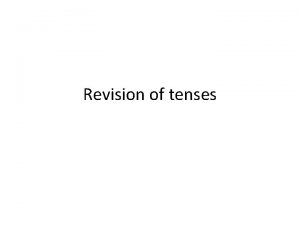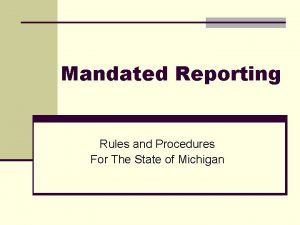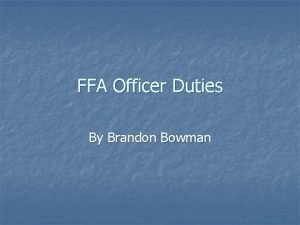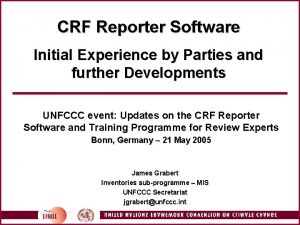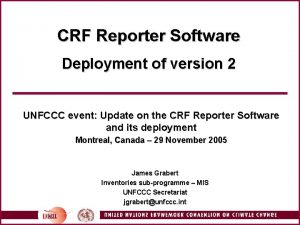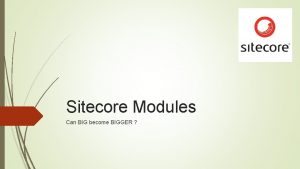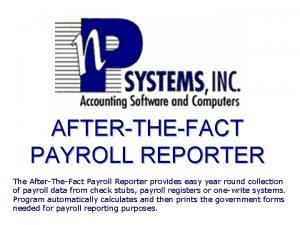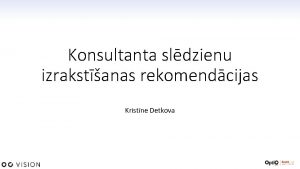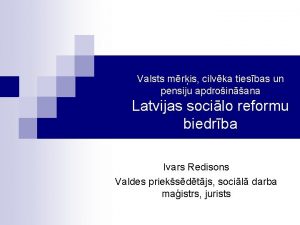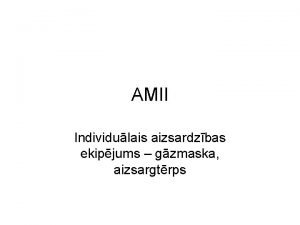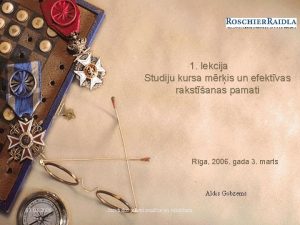How to Use MRIs University Reporter What Is













- Slides: 13

How to Use MRI’s University Reporter

What Is A Crosstab? A crosstab is merely a program where you cross rows and columns, giving you five variables: • • • Base Total 000 Projected 000 Percent across Percent down Index You can plug a target, for instance, into a column and then enter variables into rows and then examine the cells where they intersect to see how they relate to each other. This is your target. This is your percent across, compared to the target. Read as: 8. 4% of P 18 -24 are AT&T cell phone users This is your percent down. Read as: 14. 2% of AT&T cell phone users are P 18 -24

Reading MRI Data Total U. S: represents numbers for all P 18+ Total 000: the number of people projected to be in the U. S. Example: there are 27, 777, 000 P 18 -24 in the U. S. Proj 000: the number projected for the target. Example: here we are saying there are 3, 729, 000 P 35 -54 in the U. S. who own an AT&T cell phone (add three zeros to the number) Percent Across: the percent of the row that is the target. Example: 7. 3% of P 55 -64 are AT&T cell phone users Percent Down: the percent of the target that is the row. Example: 34. 7% of AT&T cell phone users are Adults 18 -34 Index: the propensity of your target to fit the definition compared to the total U. S. , with 100 as the measuring bar. Numbers over 100 show much more likely; numbers under 100 show much less likely. Example: people who graduated with “college plus” are 21% more likely than average to be AT&T cell phone users The index is calculated by dividing the percentage across or down into that of the total U. S. , the first row.

Studies Available in MRI Spring/Fall: studies released in either the spring or fall of that year, respectively. Each Spring or Fall study contains 25, 000+ respondents Product: contains data on product usage. Media: contains data on media consumption. Magazine cumulative: contains data on magazine readership. Magazine qualitative: contains data on qualitative magazine measures; (e. g. , “where read” or response to advertising in certain magazines. Business to Business: contains data from purchase decision makers and executives in companies. Upper Deck: contains data from those in the upper 10% income in the U. S. Teenmark: contains data from respondents aged 12 -17 (separate study from our regular studies, which are asked of people 18+. Top 10 Local Media Markets: contains data specific to the top 10 local media markets in the U. S. (including things like local papers and department stores): New York, L. A. , Chicago, Philadelphia, San Francisco, Boston, Detroit, Washington D. C. , Atlanta and Dallas/Fort Worth.

Logging Into University Reporter Enter the password you selected while registering. NOTE: both email addresses and passwords are CASE SENSITIVE. Log in using your university-supplied email account featuring the “. edu” domain name. Reporter will not work if you try to access it via personal or third-party email addresses. If you are a first-time user, click on the “register for a free account” link and follow the directions. When complete, follow the two steps above.

Setting Up Your Crosstab Click on “Mediamark Reporter”

Setting Up Your Crosstab 1. Pick your study you’d like to enter 2. Pick the report within that study that you’d like to examine 1. 2. 3. If you don’t see something you’d like to look at, try typing in a search keyword

Looking Over Your Crosstab Now you’ve created a report. Note the boxes on the left, detailing what you’re examining. In this example, you are looking at cell phone brands, with a base of Total Adults, and the brand AT&T in particular. If you’d like to change to a different report, you don’t have to back all the way out. Click on “Change report” link along the top. You can change the Category, Base or Target in any report by clicking on the one you’d like within those boxes. You can print out the report by clicking on the “print” button. If you’d like to dump it into Excel, click on the “spreadsheet” button.

Crosstab in Spreadsheet Format Here’s a crosstab in spreadsheet format (actually exported from University Reporter. Looking at this, you can now visualize the idea of “columns” and “rows” (which appear on Reporter as % down and % across). Your target is your column here Rows 8. 6% of W 25 -54 are AT&T cell phone users, compared to 7. 6 of the total U. S. Dividing 8. 6 into 7. 6 will give you an index of 113.

What Am I Looking at Again? Remember: everything you’re looking at is here on this page! Here’s your Category Here’s your base It’s summarized here again Here’s your target Use the scroll bar to scroll down through the rows

Practice Reading Example We’re going to summarize this report. You then look at the numbers and see how we came to this. The overall target is total adult AT&T cell phone users. Hint: look at the three boxes to the left. P 18+ with a child <12 months old in the HH are 27% more likely than the total U. S. to own an AT&T cell phone. 5. 7% of P 18+ AT&T cell phone users have a child <12 in the HH. People who live in “D” size counties are 70% less likely than the total U. S. to own an AT&T cell phone (only 2. 3% of them). Look at the data here to see how we were able to make these statements.

Practice Reading Example: No Notes

For help/tech support, call: Eastern U. S. : 800. 310. 3305 Midwest: 800. 245. 1551 West: 323. 882. 6325
 How mri works
How mri works Wesley eastridge
Wesley eastridge Weak signal propagation reporter
Weak signal propagation reporter Mandatory reporting procedures
Mandatory reporting procedures Put each verb in brackets into an appropriate verb form
Put each verb in brackets into an appropriate verb form Mandatory reporting alabama
Mandatory reporting alabama Mandated reporter training michigan
Mandated reporter training michigan Mandated reporter training connecticut
Mandated reporter training connecticut Ffa secretary duties
Ffa secretary duties Crf reporter
Crf reporter Crf software
Crf software Cheese reporter
Cheese reporter National reporter system
National reporter system Sitecore module developer
Sitecore module developer
